You can harness the chimney effect to naturally cool your home, saving energy and improving comfort. This process relies on temperature differences and air density to create a natural airflow. By designing your home with strategic openings and vertical spaces, you'll enhance this cooling effect. Position heat sources lower in the house and use materials that absorb and release heat effectively. Incorporate cross-ventilation techniques and consider adding roof vents or cupolas to boost efficiency. Proper implementation can lead to significant cost savings and a more environmentally friendly living space. Exploring these techniques further will reveal even more benefits for your home's climate control.
Understanding the Chimney Effect

Three key principles underpin the chimney effect: temperature difference, air density, and pressure gradient. When you grasp these concepts, you'll understand how this natural phenomenon can cool your home efficiently.
The chimney effect occurs when warm air rises and escapes through an opening at the top of a structure, while cooler air enters from below. This process creates a continuous airflow that can ventilate and cool your living spaces.
Temperature difference drives this effect; the greater the disparity between indoor and outdoor temperatures, the stronger the airflow.
Air density plays an essential role too. As air warms, it becomes less dense and more buoyant, causing it to rise. Conversely, cooler air is denser and sinks, replacing the rising warm air. This natural circulation forms the basis of the chimney effect.
The pressure gradient is the final piece of the puzzle. As warm air rises, it creates a low-pressure area at the bottom of your home. This pressure difference draws in cooler air from outside, maintaining the airflow cycle.
Benefits of Natural Draft Cooling
Natural draft cooling offers numerous advantages for homeowners seeking efficient and eco-friendly climate control solutions. By harnessing the chimney effect, you'll reduce your reliance on energy-intensive air conditioning systems, leading to significant cost savings on your utility bills. This passive cooling method doesn't require electricity, making it an ideal option during power outages or in off-grid homes.
You'll also enjoy improved indoor air quality as natural draft cooling promotes constant air circulation, removing stale air and introducing fresh outdoor air. This can help reduce allergens, pollutants, and moisture buildup in your home.
The system's simplicity means there are fewer mechanical parts to maintain or replace, resulting in lower long-term costs and less hassle. Natural draft cooling is environmentally friendly, as it doesn't use refrigerants or contribute to greenhouse gas emissions. It's a sustainable solution that can be easily integrated into both new and existing homes.
Additionally, you'll experience more consistent temperatures throughout your living space, eliminating hot spots and creating a more comfortable environment. By embracing this passive cooling method, you're taking a step towards a more sustainable and comfortable home.
Designing for Optimal Airflow

To maximize the chimney effect in your home, you'll need to contemplate three key design elements.
First, focus on stack height, as taller vertical spaces create stronger updrafts for more effective cooling.
Next, strategically place openings for cross-ventilation to enhance air movement and capitalize on prevailing winds.
Stack Height Considerations
Stack height plays an essential role in maximizing the chimney effect for home cooling. You'll want to take into account the vertical distance between your home's lowest air intake and the highest exhaust point. The greater this height difference, the stronger the stack effect will be.
For best results, aim for a stack height of at least 10 feet. This distance creates enough pressure difference to drive air movement effectively. If you're working with a multi-story home, you're in luck – you can utilize the entire building height to enhance the effect.
Don't forget to factor in your local climate and building design. In hot, humid areas, you might need a taller stack to overcome the dense air. Similarly, if your home has a complex layout, you may need to increase the stack height to compensate for airflow resistance.
Remember that taller isn't always better. There's a point of diminishing returns where additional height won't greatly improve cooling. Balance stack height with aesthetic considerations and local building codes.
If you can't achieve ideal height, focus on enhancing other aspects of your cooling system, like inlet and outlet sizes or strategic window placement.
Cross-Ventilation Placement Strategies
Effective cross-ventilation is the cornerstone of a successful chimney effect cooling system. To maximize airflow, you'll need to strategically place openings on opposite sides of your home.
Start by identifying the prevailing wind direction in your area and position larger inlet openings on that side. For ideal results, verify your outlet openings are slightly smaller than the inlets. This creates a venturi effect, accelerating air movement through your home.
Place inlets low on walls and outlets high on the opposite side to enhance the stack effect. Consider using casement windows that can be angled to catch breezes more effectively.
Don't forget about interior layout. Create unobstructed pathways for air to flow through your home by aligning doorways and minimizing partitions. Use transom windows or vents above doors to allow air movement even when doors are closed.
In multi-story homes, incorporate a central atrium or stairwell to facilitate vertical air movement.
Lastly, leverage landscape features to funnel cool air towards your inlets. Strategically placed trees, shrubs, or fences can help direct airflow and provide additional shade, enhancing your cooling system's efficiency.
Heat Source Positioning
The strategic placement of heat sources is essential for maximizing the chimney effect in your home cooling system. You'll want to position heat-generating appliances and activities in lower levels of your home to enhance the upward flow of warm air. Place items like ovens, dryers, and computers in basements or ground floors whenever possible.
If you're designing a new home or renovating, consider creating a central atrium or stairwell that extends from the lowest to the highest point of your house. This vertical space acts as a natural chimney, drawing warm air upwards. You can enhance this effect by installing skylights or vents at the top of the atrium.
In multi-story homes, locate bedrooms and living areas on upper floors where cooler air will naturally settle. If you have a sunroom or conservatory, position it on the south side of your home to capture heat and drive the chimney effect.
Remember to provide adequate ventilation at the highest points of your home to allow hot air to escape. By thoughtfully positioning heat sources and creating pathways for air movement, you'll maximize the cooling potential of the chimney effect in your home.
Selecting Appropriate Building Materials
Building materials play an essential role in maximizing the chimney effect for home cooling. You'll want to choose materials that promote heat absorption and release, enhancing the natural airflow within your home.
Consider using dense materials like concrete, brick, or stone for the lower levels of your house. These materials absorb heat during the day and release it slowly at night, creating a temperature difference that drives the chimney effect.
For upper levels and roofing, opt for lighter, more reflective materials. Metal roofing or light-colored tiles can help reflect sunlight and prevent excessive heat buildup.
Insulation is vital too, but make sure it's properly placed to allow for controlled airflow. Use breathable materials like wool or cellulose in walls and attics to regulate temperature and moisture.
Don't forget about windows and doors. Double-paned windows with low-emissivity coatings can reduce heat gain while allowing natural light.
Install operable windows strategically to create cross-ventilation. For doors, choose materials that provide good insulation but can also be opened to allow airflow when needed.
Vertical Shaft Placement Strategies

Strategic placement of vertical shafts is essential for maximizing the chimney effect in your home. You'll want to position these shafts to create a natural airflow path from lower to upper levels. Consider placing them near the center of your home, where they can draw cool air from the ground floor and expel warm air through the roof.
When designing your vertical shafts, keep in mind the following factors:
| Factor | Importance | Considerations |
|---|---|---|
| Height | High | Taller shafts increase draft |
| Width | Medium | Wider shafts reduce friction |
| Insulation | High | Prevents heat loss in winter |
| Material | Medium | Affects heat absorption |
You'll need to balance these factors based on your home's layout and local climate. For multi-story homes, consider creating a continuous shaft that extends from the basement to the roof. This design maximizes the stack effect, pulling cool air from the lower levels and pushing hot air out through the top.
Don't forget to incorporate operable vents at both the bottom and top of the shaft. These allow you to control airflow and adjust for seasonal changes, ensuring your home remains comfortable year-round while minimizing energy consumption.
Enhancing Stack Ventilation
To enhance stack ventilation in your home, you'll need to understand vertical airflow design principles.
You can implement multiple-story ventilation strategies to maximize the chimney effect throughout your house.
Don't forget to incorporate roof vents and cupolas, which can greatly boost the efficiency of your natural cooling system.
Vertical Airflow Design Principles
Three key principles underpin effective vertical airflow design for enhancing stack ventilation.
First, you'll want to maximize height difference between inlet and outlet points. The greater the vertical distance, the stronger the chimney effect. Aim for a minimum of two stories, but taller structures will yield better results.
Second, guarantee proper sizing of openings. Inlets at the lower levels should be slightly larger than outlets at the top to create a venturi effect, accelerating airflow. A good rule of thumb is to make inlets 10-15% larger than outlets.
Lastly, minimize obstructions in the vertical pathway. Design open, interconnected spaces that allow air to flow freely from bottom to top. Stairwells, atriums, and voids can serve as excellent vertical channels.
If you're retrofitting an existing home, consider creating a dedicated thermal chimney or solar chimney to enhance the stack effect. Remember to account for prevailing winds and orient your building to take advantage of natural breezes.
Multiple-Story Ventilation Strategies
Building on these vertical airflow design principles, let's explore specific strategies for enhancing stack ventilation in multi-story homes.
You'll want to create a continuous pathway for air to flow from lower to upper levels. Start by installing operable windows or vents at the lowest level, preferably on the north or shaded side of your home. These will serve as cool air inlets.
On upper floors, position larger openings or windows on the opposite side of the house. This creates a diagonal airflow path, maximizing the cooling effect. For ideal results, verify the upper-level openings are at least 1.5 times larger than the lower inlets.
Don't forget about stairwells and attics. These spaces can act as natural chimneys, drawing warm air upward. Install a vented skylight or cupola in your attic to expel hot air efficiently.
If you have a central staircase, consider adding a clerestory window at the top to enhance the stack effect.
In three-story homes, you can create a cascading cooling effect by opening windows on each level progressively. This allows cooler air to enter at the ground floor, push warm air up to the second floor, and ultimately expel it through top-floor openings.
Roof Vents and Cupolas
Roof-top ventilation systems play an imperative role in enhancing stack ventilation for efficient home cooling. By installing roof vents or cupolas, you'll create an exit point for warm air, accelerating the chimney effect.
These structures work in tandem with lower-level openings to establish a continuous airflow, drawing cooler air from below and expelling heated air through the top of your home.
When considering roof vents or cupolas, keep these key points in mind:
- Size matters: Confirm the vent or cupola is large enough to handle your home's air volume.
- Placement is vital: Position vents at the highest point of your roof for maximum effectiveness.
- Consider aesthetics: Choose designs that complement your home's architecture.
You can opt for static vents, which rely solely on natural convection, or powered vents that use fans to boost air movement.
Cupolas, while traditionally decorative, can be functional when properly designed with operable louvers. They're particularly effective in homes with high ceilings or open floor plans.
Incorporating Thermal Mass

Thermal mass plays an essential role in enhancing the chimney effect for home cooling. You can incorporate thermal mass materials like concrete, brick, or stone into your home's design to absorb and store heat during the day.
These dense materials slowly release the stored heat at night, creating a temperature difference that drives the chimney effect.
To maximize the benefits of thermal mass, strategically place these materials in areas exposed to direct sunlight or heat. You'll want to use them in floors, walls, or even as standalone elements like interior columns.
During the day, the thermal mass absorbs excess heat, keeping your living spaces cooler. As night falls and outdoor temperatures drop, the stored heat is released, warming the air near the thermal mass.
This warmed air rises, creating a natural convection current that draws cooler air from lower levels of your home. You can enhance this effect by positioning thermal mass near air intake points at the bottom of your home and ensuring clear pathways for air movement.
Humidity Control Techniques
You'll find that controlling humidity is essential for effective chimney effect cooling.
By promoting airflow, you can naturally dehumidify your space, making it feel cooler and more comfortable.
Consider incorporating moisture-absorbing building materials, such as clay or lime plaster, to further reduce indoor humidity levels.
Dehumidification Through Airflow
Leveraging the chimney effect for dehumidification, airflow can greatly reduce humidity levels in your home. As warm, humid air rises, it's naturally drawn out of your living spaces through upper-level openings.
This creates a vacuum effect, pulling in cooler, drier air from lower levels or outside. To maximize this process, you'll want to strategically position windows, vents, or exhaust fans at the highest points of your home.
To enhance dehumidification through airflow:
- Install ceiling fans to circulate air and promote evaporation
- Use bathroom and kitchen exhaust fans to remove moisture at its source
- Create cross-ventilation by opening windows on opposite sides of rooms
Moisture-Absorbing Building Materials
Incorporating moisture-absorbing building materials into your home's construction or renovation can considerably contribute to humidity control. These materials work passively to regulate indoor moisture levels, complementing the chimney effect for natural cooling. You'll find various options available, each with unique properties and applications.
Clay-based materials, like earthen plaster or adobe bricks, excel at absorbing excess moisture from the air. They'll help maintain a comfortable humidity level while adding a natural aesthetic to your home.
Wood, particularly untreated softwoods, also acts as a natural moisture regulator. You can use it for walls, ceilings, or flooring to enhance humidity control.
For more modern solutions, consider gypsum board with moisture-absorbing additives or specialized mineral-based panels. These materials actively draw in excess moisture when humidity is high and release it when the air becomes drier.
You can also opt for moisture-absorbing paint or coatings that contain silica gel or other hygroscopic substances.
When selecting these materials, consider their placement within your home. Focus on areas prone to high humidity, such as bathrooms, kitchens, or basements.
Night Cooling Strategies

As the sun sets and temperatures drop, night cooling strategies become highly effective for harnessing the chimney effect. You can take advantage of cooler nighttime air to naturally ventilate and cool your home. Open windows and doors strategically to create a flow of cool air through your house, pushing warm air up and out through upper-level openings.
To maximize night cooling, contemplate these techniques:
- Cross-ventilation: Open windows on opposite sides of your home to create a natural airflow path.
- Stack effect: Utilize multi-story spaces by opening low-level windows and high-level vents or skylights.
- Thermal mass cooling: Allow cool night air to flow over exposed thermal mass surfaces, storing coolness for the next day.
You'll want to close windows and shades during the day to trap the cooler air inside.
Using fans can enhance air movement and improve the cooling effect.
Remember to contemplate security when leaving windows open at night.
Combining With Passive Solar Design
Passive solar design works hand in hand with the chimney effect to create an efficient cooling system for your home. By incorporating both strategies, you'll maximize natural cooling potential while minimizing energy consumption.
Start by orienting your home to take advantage of prevailing winds and sun patterns. Place large windows on the north and south sides to control solar gain. Use overhangs, awnings, or deciduous trees to shade south-facing windows during summer while allowing winter sunlight.
Incorporate thermal mass materials like concrete floors or stone walls to absorb and release heat slowly. To enhance the chimney effect, design your home with an open floor plan and high ceilings.
Install operable clerestory windows or skylights at the highest point to release hot air. Create a cool air intake zone on the lower levels using shaded courtyards or earth-cooled spaces.
Combine these features with proper insulation and air sealing to maintain temperature control. Use light-colored, reflective roofing materials to reduce heat absorption.
Maintenance and Efficiency Tips

Regular upkeep is essential to maintain the effectiveness of your chimney effect cooling system. To guarantee peak performance, you'll need to conduct periodic inspections and cleanings.
Check for any obstructions in the air intake and exhaust points, as these can greatly reduce airflow and diminish the cooling effect. You should also examine the system's components for wear and tear, replacing or repairing parts as needed.
To maximize efficiency, consider these tips:
- Install adjustable vents or louvers to control airflow based on weather conditions and cooling needs.
- Use reflective materials or light-colored paint on exterior surfaces to minimize heat absorption.
- Incorporate heat-resistant insulation around the chimney to prevent unwanted heat transfer.
Don't forget to clean or replace air filters regularly to maintain good indoor air quality. If you've integrated fans into your system, confirm they're properly lubricated and functioning at peak efficiency.
During cooler months, you may want to seal off the chimney to prevent heat loss. By following these maintenance and efficiency tips, you'll keep your chimney effect cooling system running smoothly, providing natural and energy-efficient cooling for your home year after year.
Overcoming Common Challenges
Despite its effectiveness, chimney effect cooling can face several challenges. You'll need to address these issues to maximize the system's efficiency. One common problem is insufficient airflow, which can occur due to inadequate openings or obstructions in the air path. To tackle this, verify your lower-level windows and upper vents are properly sized and unobstructed.
Another challenge is managing humidity levels. In humid climates, the cooling effect may be less noticeable. Consider using dehumidifiers or installing ceiling fans to enhance air movement and comfort. Temperature inversions can also disrupt the chimney effect, particularly on calm nights. To overcome this, you may need to use fans temporarily to restart the airflow.
Here's a quick reference guide for common challenges and solutions:
| Challenge | Cause | Solution |
|---|---|---|
| Poor airflow | Inadequate openings | Resize windows/vents |
| High humidity | Climate conditions | Use dehumidifiers |
| Temperature inversion | Weather patterns | Employ fans temporarily |
Lastly, be aware that external factors like wind direction and building orientation can impact the chimney effect's efficiency. You may need to adjust your strategy based on these variables to maintain peak cooling performance throughout different seasons and weather conditions.
Cost-Effective Implementation Methods

Implementing a chimney effect cooling system doesn't have to break the bank. You can start by making simple modifications to your existing home structure. Open up vertical pathways for air movement by ensuring clear passages from lower to upper floors.
Install vents or windows at the highest points of your home to allow hot air to escape effectively.
For a more robust system, consider these cost-effective methods:
- DIY solar chimneys: Construct a simple solar chimney using black-painted PVC pipes or recycled materials to create a heated air column that draws cool air into your home.
- Repurpose existing structures: Transform unused chimneys or elevator shafts into natural cooling channels by adding vents and improving airflow.
- Landscaping techniques: Plant deciduous trees on the south and west sides of your home to provide shade in summer while allowing sunlight in winter.
You can also enhance the chimney effect by installing low-cost wind turbine ventilators on your roof.
These devices spin with the wind, creating a suction effect that pulls hot air out of your home.
Frequently Asked Questions
Can Chimney Effect Cooling Be Effective in High-Rise Buildings?
Yes, you can effectively use chimney effect cooling in high-rise buildings. It's especially powerful in taller structures, as the height difference enhances the stack effect. You'll need proper design and ventilation systems to maximize its benefits.
How Does Chimney Effect Cooling Impact Indoor Air Quality?
You'll notice improved indoor air quality with chimney effect cooling. It constantly draws fresh outdoor air in, pushing stale air out. You're less likely to breathe recirculated pollutants, and you'll enjoy a fresher, cleaner indoor environment.
Are There Any Health Risks Associated With Chimney Effect Cooling Systems?
You'll face minimal health risks with chimney effect cooling systems. However, you should be aware of potential issues like increased humidity, allergen circulation, and outdoor pollutants entering your home. Regular maintenance and air filtering can mitigate these concerns.
Can Chimney Effect Cooling Be Retrofitted Into Existing Homes?
You can retrofit chimney effect cooling into existing homes. You'll need to install vents, create air pathways, and possibly add a solar chimney. It's not always simple, but it's doable with proper planning and modifications.
How Does Climate Change Affect the Efficiency of Chimney Effect Cooling?
Climate change impacts chimney effect cooling's efficiency. You'll notice warmer nights reduce temperature differences needed for airflow. Rising temperatures may require you to adapt your system, potentially extending cooling towers or enhancing ventilation to maintain effectiveness.
In Summary
You've now explored the powerful potential of the chimney effect for natural home cooling. By understanding airflow dynamics and implementing smart design choices, you'll create a comfortable, energy-efficient living space. Remember, proper material selection and strategic shaft placement are key. Don't forget to integrate this system with other passive cooling methods for best results. With regular maintenance and a bit of troubleshooting, you'll enjoy sustainable cooling for years to come. It's time to harness nature's power and transform your home.
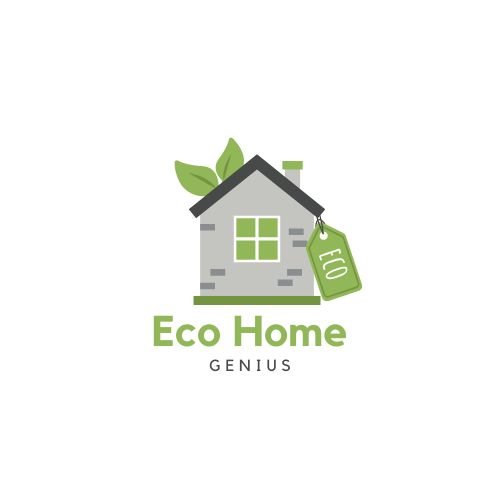
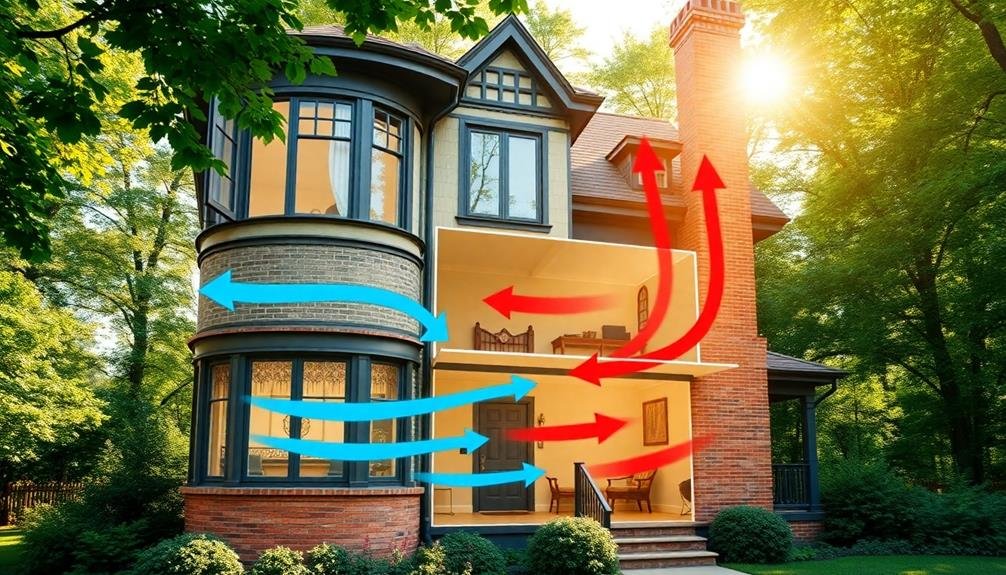
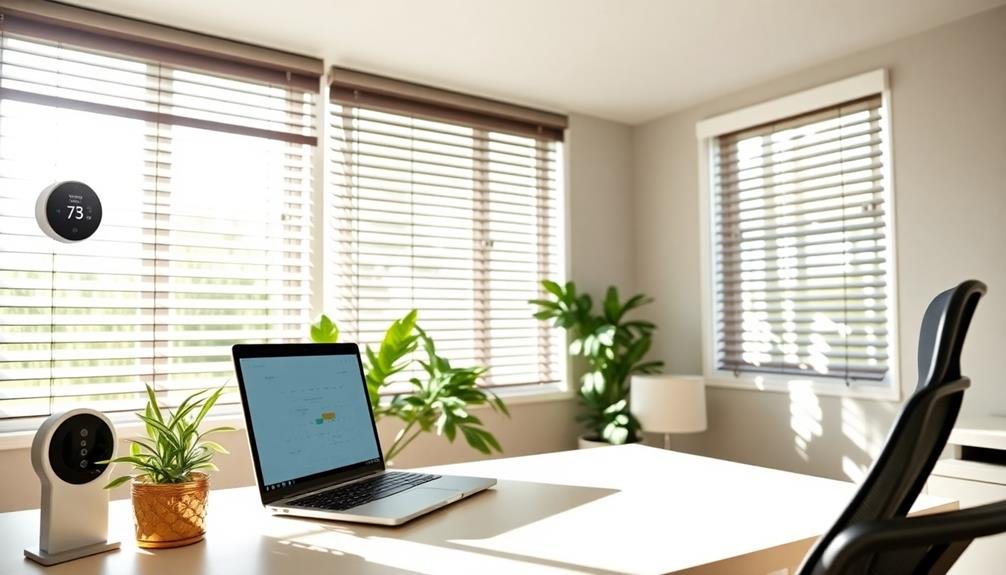
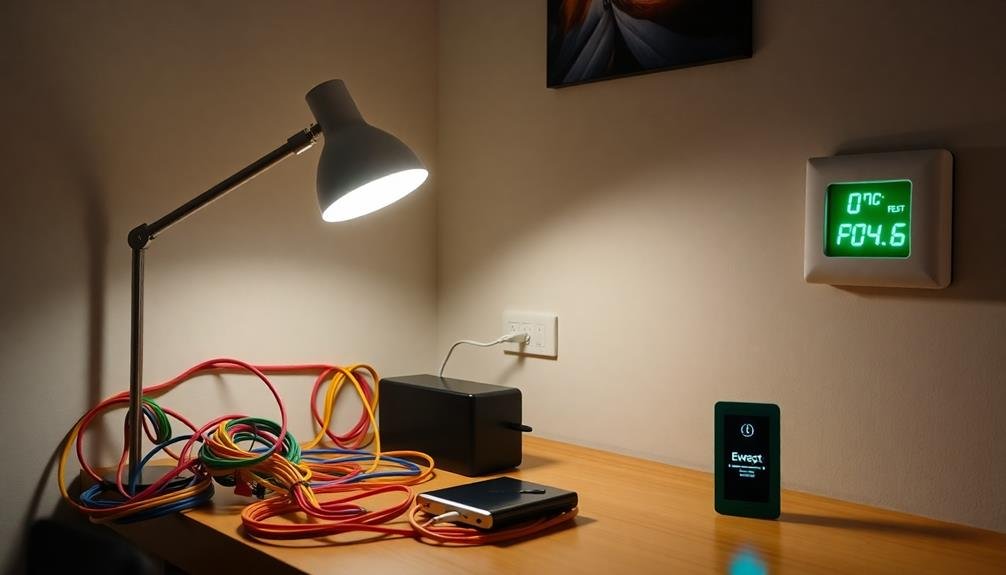
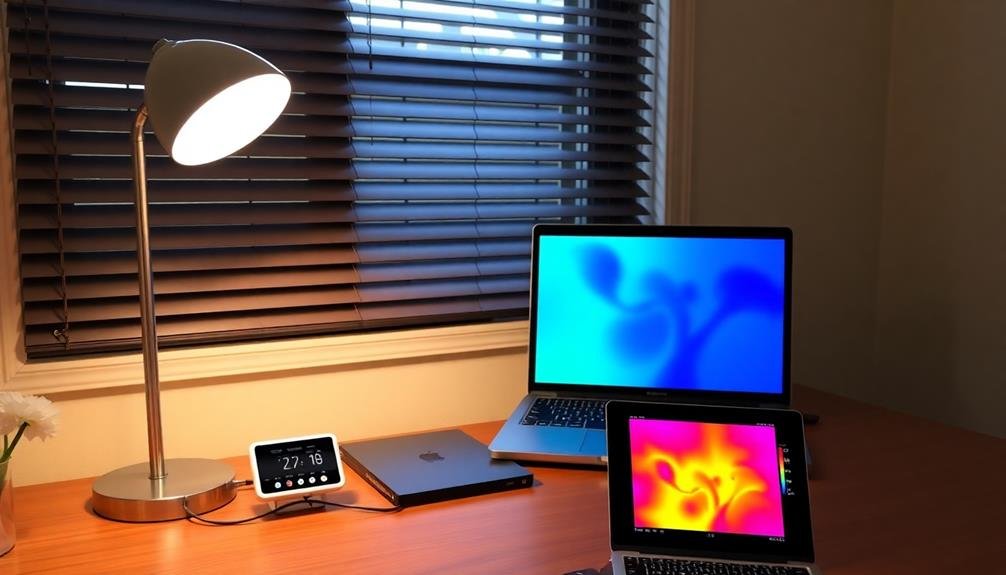
Leave a Reply